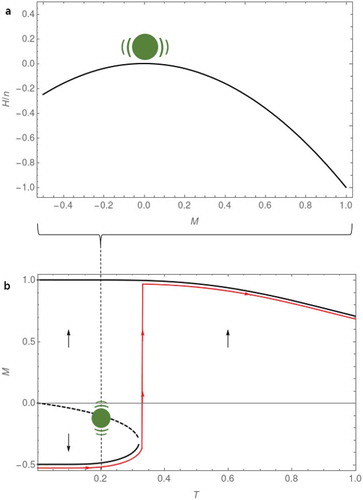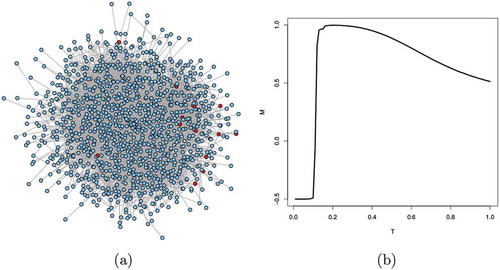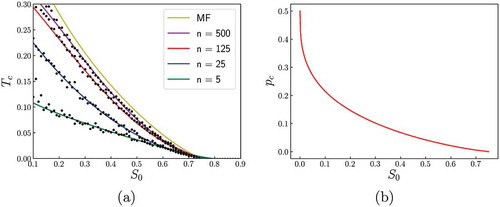Figures & data
Figure 1. Cooperation for public goods. (a) Mean dissatisfaction and level of cooperation
. When all defect,
is at a local minimum, on the left, but to proceed to the global minimum where all cooperate, on the right, participants are hindered by a hill. (b) Mean-field analysis with
shows below
one stable state with mostly cooperators, at the top, and another stable state in finite time with mostly defectors, at the bottom. A metastable state in between, indicated by the dotted line, corresponds to the hilltop in Figure 1(a). Above
only one state remains, where with increasing
, cooperators are joined by increasing numbers of defectors

Figure 2. Numerical simulation on a university e-mail network with and clustering
; data from Guimerà (2003). (a) the network at a near-critical turmoil level of
;
. Some nodes start cooperating (red) whereas most still defect (blue). (b)
is smaller than in the mean-field approximation, but the overall pattern is qualitatively the same (compare to Fig. 1 b)

Figure 3. Consequences of shifting with the mean-field approach (MF), keeping
. (a) With increasing
, less agitation is necessary to turn defectors into cooperators. For comparison, numerical simulations on several random networks with density = 0.8 are shown as well. (b) The proportion of defectors
at
decreases with increasing

